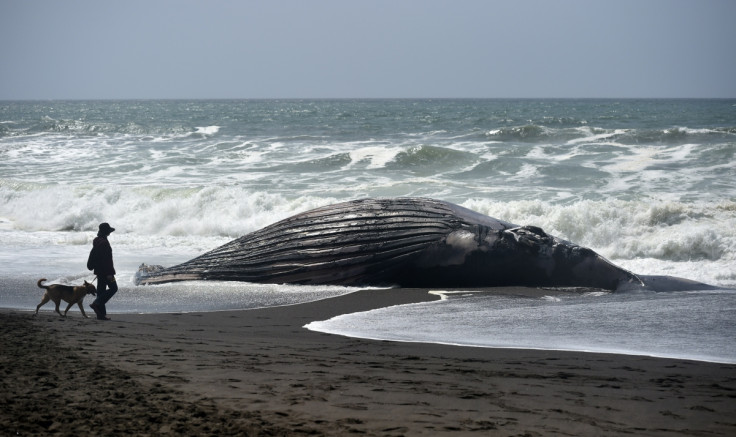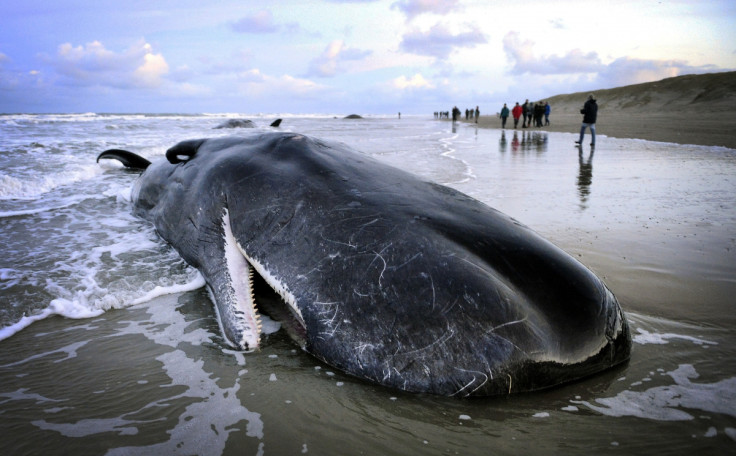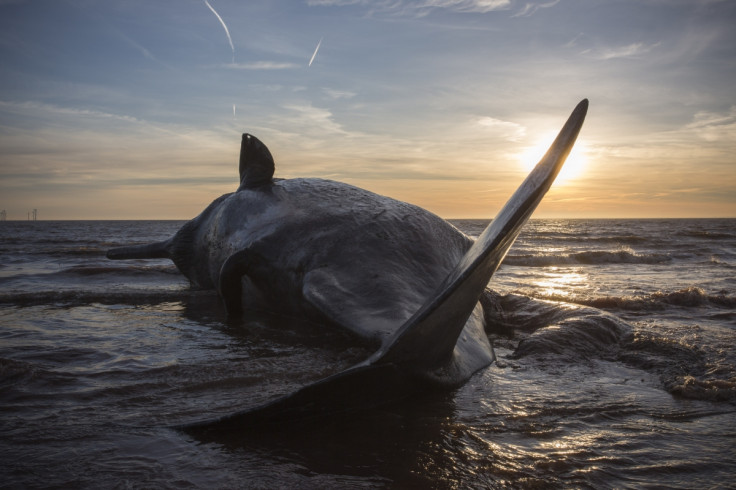Beached sperm whales: What is behind the record number of whale strandings on UK and European shores?

During January 2016, we have seen 29 sperm whale strandings across Europe.
To put that into perspective, 10 years ago there were no strandings in Europe, and just nine across the entire world: one in Tunisia, one in New Zealand, and seven in Australia.
"We do know that this type of thing happens every year, and not just in the UK," Catherine Bowley at the conservation charity Orca, told IBTimes UK. "But this is by far the largest amount of strandings we have seen in UK recorded history."
This year's events
The first announcement of strandings occurred in The Netherlands on Texel Island, north of Amsterdam, on 12 January. Five of the sperm whales died overnight after being stranded for several hours.
"Because the animals were still alive, the whale stranding protocol of the Ministry of Economic Affairs came into force in order to help them," said the municipal authority in a statement. "Unfortunately, none of the sperm whales survived the stranding."
Three more whales were found beached just 11 days later, this time near Skegness, Lincolnshire. This followed another report of a 50ft sperm whale becoming beached in Norfolk two days earlier.

At the time, Peter Evans, from the Sea Watch Foundation, told Sky News: "There have been 12 other sperm whales that stranded and died: six in the Netherlands and six in Germany. They were probably all in the same group, quite a big group which are usually adolescent males a few years old."
Following the events in Skegness on 23 January, another whale was found in Lincolnshire just two days later. On 1 February, eight whales became beached at Wadden Sea National Park in Germany.
One day later, France discovered its first stranded whale, quickly followed by another two in Germany on 3 February. Finally, the latest report came from Hunstanton in Norfolk on 4 February.
Two whales were found beached in Hunstanton, one of which weighed 30 tonnes – the same as five and a half African elephants. Despite wildlife experts throwing buckets of seawater over it to ease the stress it endured, the whale died 12 hours after it was discovered.
"We're very sad to confirm that the whale has died," said Stephen Marsh, Operations Manager at British Marine Life Rescue (BDMLR). "But it is a bit of a relief because it had been in quite a lot of suffering."
Why it happens
Experts have different theories about why we are seeing so many stranded whales this year. However, the most commonly accepted theory is that male sperm whales searching for food are having to move further and further away from their usual hunting grounds.
"We think they migrate south around Norway, possibly following a food source," Bowley told IBTimes UK. "They end up heading into the North Sea which is really shallow – less than 200m deep. The further south they go, the shallower it gets."
She says that they keep going, despite not finding any food. They eventually become malnourished, and the energy used to look for food becomes spent.
"That's how they end up on beaches – they become exhausted and malnourished," said Bowley. "We've seen studies that found their stomachs have been empty too, so it supports that theory."
The alternative theory relates to seismic activity – vibrations of the Earth. This could be from earthquakes, or even just ships moving through the sea. The vibrations disrupt the communication of the whales, and they could possibly end up getting lost – winding up on beaches.
Scientists concluded in 2015 that this was the reason for huge numbers of whales becoming stranded and dying on UK beaches in 2011. They said that underwater explosions from four large bombs by the Royal Navy disorientated them, and forced them ashore.

How to help
"To be honest, there is not a lot we can do at the moment," Bowley said. As humans, we cannot put up any 'no entry' signs whenever whales come close to beaches.
That said, we can do little things, in the hope that it all adds up in the long term. Orca runs annual surveys that the public are encouraged to join.
Similar to the RSPB's annual Big Garden Birdwatch, Orca's survey shows how populations of whales change year on year, which helps conservationists determine the best way to go about helping them.
Bowley also says that we have to reduce the amount of litter entering the ocean, and take the extra few seconds to recycle waste. Education is the key, she says.
"I also just want to remind people to keep their distance," she added. "Let the experts continue with their work, but you should also report any strandings to the BDMLR or any other experts."
There are approximately 300,000 sperm whales in the world – 73% less than 1986, when commercial whaling was banned.
© Copyright IBTimes 2025. All rights reserved.






















